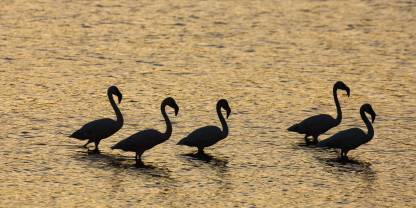Average Expert Rating
Rating Breakdown
Write a User ReviewGhost Towns and Windswept Sandscapes
For most of the 20th century, this region was cordoned off for diamond mining, with severe penalties in place for anyone who approached within 100km. In 2008, the Sperrgebiet was declared a national park in order to rehabilitate and preserve its sands and inselbergs, and protect its delicate flora, which is nourished by the early morning sea mists. Parts of the park were opened to members of the public booking guided tours, but visitor numbers remain low.
For me, the Sperrgebiet’s main attractions are its sense of space and solitude. Stark, lichen-mottled rocks, striking aloes and euphorbias and windswept, sand-engulfed abandoned buildings lend texture and drama. Botanists come here to study the region’s many rarities. Animal sightings are
Read more
infrequent, even though there are antelopes and hyenas in the park; there are also numerous bird species, particularly on the reed beds and mudflats near the mouth of the Orange River in the far southwest.Namibia’s Forbidden Territory
This vast national park is one of the newest in Namibia, proclaimed in 2004, and as such it remains largely undeveloped for tourism. Its German name (‘Sperrgebiet’) translates as Forbidden Territory, in reference to the long period when unauthorised entry was forbidden by De Beers, the mining conglomerate that owned it, due to its wealth of diamond reserves. The scenery here is truly wild, almost blindingly white in some areas, and although we were unlucky, many visitors encounter the region’s famed herd of feral horses when visiting. Readily accessible by foot or car is the stretch of the Lüderitz Peninsula leading 20km south of the pretty Germanic port of Lüderitz to Diaz Point. Here we saw Cape fur seals basking on the rocks, and a variety of marine birds including the rare black oystercatcher, as well as ruddy turnstone, whimbrel, and various gulls and terns.
An Empty Sea of Sand, Diamond Mining Ghost Towns and Intrepid Drives
Read more
museum and restored buildings like the Recreation Hall or Manager’s House. But my highlight is scrambling through the decaying buildings to try and imagine what it was like for those privileged settlers who incredulously made their life in these unforgiving dunes.Tsau //Khaeb: Forbidden Frontiers
This vast tract of sand-dune wilderness in Namibia’s south (formerly Sperrgebiet NP) is one of southern Africa’s great unknowns. Closed for decades and under the control of secretive diamond-mining interests, the region is now a park, although a permit is still required. There are some real hard-core adventures to be had here – the multi-day 4x4 coastal route across the sands from Lüderitz to Walvis Bay is one of southern Africa’s most rewarding wilderness adventures, although you’ll need to go with an organized tour to undertake it. But the ghostly, sand-drowned town of Kolmanskop can be visited on a day trip from Lüderitz, while the desert-adapted wild horses that inhabit the arid country west of the town of Aus are another Tsau //Khaeb specialty. Otherwise, wildlife is pretty thin on the ground with brown hyenas, some unusual reptiles (such as the desert rain frog) and rare bird species among the rather elusive highlights.

